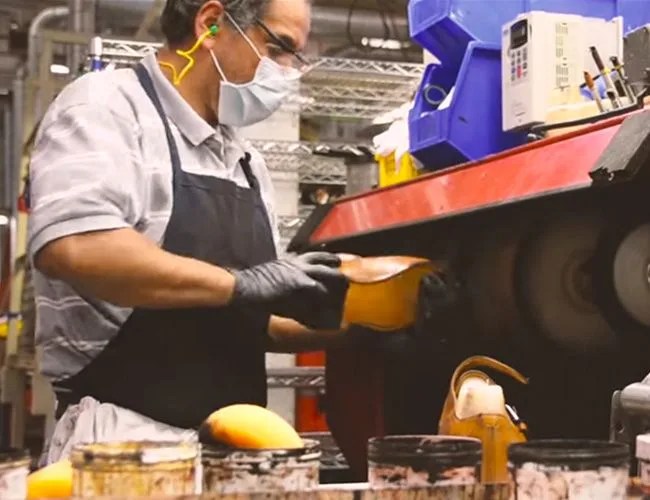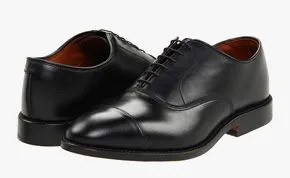An Air Force Colonel serving in Baghdad, a cop walking his beat and a waterfront manager rescuing a boat in a storm — all three require nerves of steel and footwear to match. Logic would dictate that those endeavors are undergone in a pair of heavy-duty work boots; your footwear takes on struggles more than any other part of your apparel. But those rigorous jobs were done in a pair of dress shoes.
The above scenarios are just a handful plucked from Allen Edmonds’ 90 Stories for 90 Years, a book published by the brand and distributed to their stores, employees and business partners. The very existence of the book is indicative of the kind of company-consumer dynamic at play with Allen Edmonds, as is the fact that Allen Edmonds wearers refer to themselves as “AE Men”. That kind of brand loyalty is difficult for even car manufacturers and tech brands to drum up, let alone a shoe company. But a look behind the scenes with Allen Edmonds reveals that this is a very special brand of footwear.
“There are certainly cheaper ways to make shoes, but until we discover a better way, we’ll stick with what got us here.”
Allen Edmonds is very much based on tradition. Since it was founded in 1922, the company has utilized the same 212-step shoemaking technique. This 93-year-old process includes using the tried-and-true Goodyear Welt, a method that attaches the shoe’s upper to the sole in such a way that increases comfort and durability (there are no metal shanks or nails). In the words of chief marketing executive Collin Hall: “The 212-step Goodyear welt process is a time-tested, fantastic way to handcraft a shoe. There are certainly cheaper ways to make shoes, but until we discover a better way, we’ll stick with what got us here.”
The 212-step process is carried out by skilled employees on machines that are decades old. The process starts with the sourcing of top-quality leather. Allen Edmond’s most famous relationship is with the Horween Leather Company, the storied Chicago tannery that is only two hours from the Allen Edmonds headquarters in Port Washington, WI. AE works with other suppliers, sure, but Horween makes some of the best — if not the best — Cordovan leather in the world. Workers stamp and stitch these Cordovan uppers together with precision and skill.
From there, the uppers are fitted over a last — a foot-shaped mold that gives the shoe its form. Allen Edmonds has about 50,000 lasts in 19 different shapes in a variety of lengths and widths, providing customers with a selection of fits that will properly match just about anyone’s tired dogs. Once the upper takes its shape, a Goodyear welt is attached. Some shoe makers opt for synthetic welts, but Allen Edmonds prefers to use a sturdy strip of leather. Cork is applied between the insole and outsole as a natural shock absorber, and one that conforms to the wearer’s feet. This is one of the reasons why AE faithful swear by the comfort of their shoes.
Bipartisan Footwear

